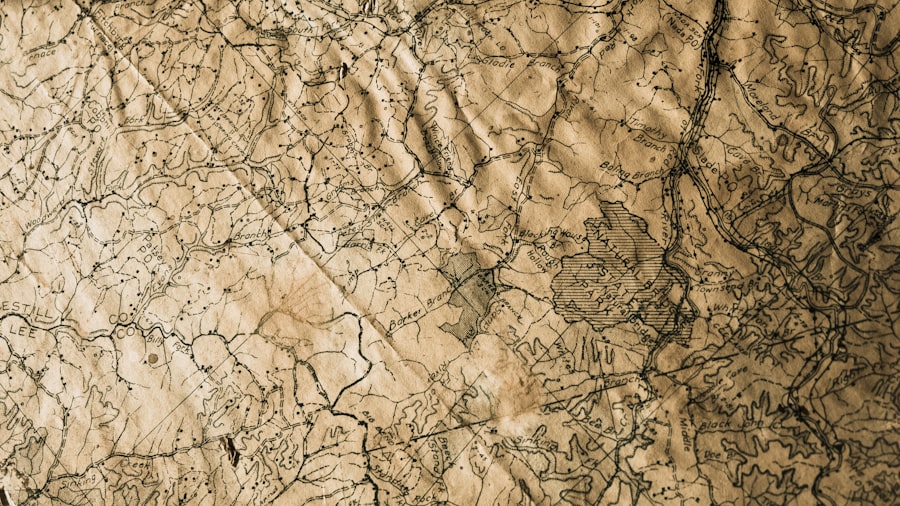Ethnohistory is a multidisciplinary field that merges the methodologies of history and anthropology to study the past of specific cultural groups, particularly indigenous populations. It seeks to understand how these groups have perceived their own histories and how they have interacted with external forces over time. Ethnohistorians utilize a variety of sources, including oral traditions, archival documents, and archaeological findings, to construct narratives that reflect the lived experiences of these communities.
This approach emphasizes the importance of indigenous perspectives, allowing for a more nuanced understanding of historical events that have often been dominated by Eurocentric narratives. The purpose of ethnohistory extends beyond mere academic inquiry; it serves as a means of cultural preservation and empowerment for indigenous communities. By documenting and analyzing their histories, ethnohistorians help to validate the experiences and identities of these groups, which have frequently been marginalized or misrepresented in mainstream historical accounts.
This validation is crucial not only for the communities themselves but also for broader societal understanding, as it challenges prevailing stereotypes and fosters a more inclusive view of history. Ethnohistory thus plays a vital role in bridging gaps between past and present, allowing contemporary societies to engage with the complexities of cultural heritage.
Key Takeaways
- Ethnohistory is the study of indigenous cultures and histories through a combination of historical and anthropological methods.
- The field of ethnohistory has evolved over time, influenced by changes in historical and anthropological scholarship as well as by the perspectives of indigenous peoples themselves.
- Ethnohistorical research employs a variety of methodologies and approaches, including archival research, oral history, and ethnographic fieldwork.
- Ethnohistory plays a crucial role in understanding the complexities of indigenous cultures and histories, providing insights that may be overlooked by traditional historical approaches.
- Ethnohistory intersects with other disciplines such as anthropology, archaeology, and sociology, enriching our understanding of indigenous peoples and their experiences.
The Evolution of Ethnohistory: Historical Context and Influences
The roots of ethnohistory can be traced back to the late 19th and early 20th centuries when scholars began to recognize the limitations of traditional historical methodologies that often overlooked indigenous voices. Early ethnohistorical work was heavily influenced by the burgeoning fields of anthropology and sociology, which emphasized participant observation and the importance of cultural context. Pioneering figures such as Franz Boas advocated for a more holistic approach to studying cultures, arguing that understanding a society’s history required an appreciation of its social structures, beliefs, and practices.
As the field evolved, it became increasingly interdisciplinary, drawing on insights from archaeology, linguistics, and even geography. The mid-20th century saw a significant shift in focus as ethnohistorians began to incorporate oral histories into their research. This was a pivotal moment, as it allowed for the inclusion of indigenous narratives that had previously been dismissed or ignored by traditional historians.
Warren and John E. McPhee exemplified this shift, as they sought to document Native American histories through the lens of indigenous storytelling traditions.
This evolution marked a critical turning point in ethnohistory, establishing it as a legitimate field of study that prioritizes the voices of those who have historically been silenced.
Methodologies and Approaches in Ethnohistorical Research

Ethnohistorical research employs a diverse array of methodologies that reflect its interdisciplinary nature. One prominent approach is the use of oral histories, which involves collecting firsthand accounts from community members about their experiences and cultural practices. This method not only preserves valuable knowledge but also empowers indigenous voices by allowing them to narrate their own histories.
Ethnohistorians often conduct interviews, engage in participant observation, and participate in community events to gain deeper insights into the cultural context surrounding historical events. In addition to oral histories, ethnohistorians frequently analyze archival materials such as government documents, missionary records, and settler accounts. These sources can provide critical information about interactions between indigenous populations and colonial powers, revealing power dynamics and cultural exchanges that shaped historical trajectories.
However, it is essential for researchers to approach these documents with a critical eye, recognizing their potential biases and limitations.
The Role of Ethnohistory in Understanding Indigenous Cultures and Histories
Ethnohistory plays a crucial role in illuminating the rich tapestry of indigenous cultures and histories that have often been overlooked or misrepresented in mainstream historical narratives. By centering indigenous perspectives, ethnohistorians contribute to a more accurate understanding of how these communities have navigated historical challenges such as colonization, displacement, and cultural assimilation. For instance, the work of ethnohistorian Patricia Galloway on the Choctaw Nation highlights how oral traditions can reveal insights into social organization, land use, and resistance strategies employed by indigenous peoples in the face of external pressures.
Moreover, ethnohistory serves as a vital tool for cultural revitalization within indigenous communities. By documenting traditional practices, languages, and belief systems, ethnohistorians help preserve cultural heritage for future generations. This preservation is particularly important in contexts where indigenous languages are endangered or where traditional practices have been disrupted by colonial policies.
The revitalization efforts among the Maori in New Zealand exemplify this dynamic; ethnohistorical research has played a significant role in reclaiming cultural narratives and fostering pride in indigenous identity.
Ethnohistory and its Intersection with other Disciplines
The interdisciplinary nature of ethnohistory allows it to intersect with various fields such as archaeology, sociology, linguistics, and environmental studies. Each discipline contributes unique methodologies and perspectives that enrich ethnohistorical research. For example, archaeological findings can provide tangible evidence of past human activities, complementing oral histories and written records.
This synergy enhances our understanding of how indigenous peoples interacted with their environments over time. Linguistics also plays a significant role in ethnohistorical studies by examining language use within cultural contexts. Language is not merely a means of communication; it encapsulates worldviews, social structures, and historical experiences.
Ethnohistorians often collaborate with linguists to analyze how language reflects cultural identity and continuity amidst change. This collaboration can reveal insights into migration patterns, trade networks, and social relationships among different groups.
Challenges and Future Directions in Ethnohistorical Studies

Despite its contributions to understanding indigenous cultures and histories, ethnohistory faces several challenges that researchers must navigate. One significant challenge is the ethical consideration surrounding the use of oral histories. Ethnohistorians must be sensitive to issues of consent, representation, and ownership when working with indigenous communities.
Ensuring that research benefits the community rather than exploiting it is paramount; this requires building trust and fostering collaborative relationships with community members. Another challenge lies in the ongoing impact of colonialism on indigenous populations. Many communities continue to grapple with the legacies of colonization, including loss of land, language erosion, and cultural dislocation.
Ethnohistorians must be mindful of these contemporary issues while conducting their research, recognizing that historical narratives are often intertwined with present-day struggles for rights and recognition. Looking ahead, the future of ethnohistorical studies will likely involve greater collaboration between researchers and indigenous communities. As more indigenous scholars enter the field, there is an opportunity for new methodologies that prioritize community engagement and self-determination in research processes.
Additionally, advancements in technology may facilitate innovative approaches to documenting oral histories and preserving cultural knowledge. Digital platforms can serve as repositories for indigenous narratives, making them accessible to wider audiences while ensuring that communities retain control over their stories. In conclusion, ethnohistory stands as a vital field that not only enriches our understanding of indigenous cultures but also empowers these communities by validating their histories.
Through its interdisciplinary approaches and commitment to inclusivity, ethnohistory continues to evolve as it addresses contemporary challenges while honoring the complexities of past experiences.
For a deeper understanding of the nature of reality and liberation, readers may find the article Exploring Vedanta Philosophy: Understanding the Nature of Reality and Liberation to be a valuable resource. This article delves into the philosophical concepts that shape our understanding of the world and our place within it, offering insights that can complement the study of ethnohistory. By exploring the intersections between philosophy and history, researchers can gain a more holistic perspective on the development and scope of ethnohistory.
FAQs
What is ethnohistory?
Ethnohistory is the study of the history of indigenous peoples and their cultures, using a combination of historical and ethnographic methods.
What is the scope of ethnohistory?
The scope of ethnohistory includes the study of indigenous societies, their interactions with colonial powers, the impact of colonization on indigenous cultures, and the ways in which indigenous peoples have adapted and resisted colonial influences.
What are the methods used in ethnohistory?
Ethnohistorians use a variety of methods, including archival research, oral history interviews, linguistic analysis, and ethnographic fieldwork to reconstruct the history and culture of indigenous peoples.
What are the key developments in the field of ethnohistory?
Key developments in ethnohistory include the incorporation of indigenous perspectives and voices, the use of interdisciplinary approaches, and the recognition of the importance of understanding indigenous histories and cultures on their own terms.
How does ethnohistory contribute to our understanding of the past?
Ethnohistory provides a more comprehensive and nuanced understanding of the past by integrating indigenous perspectives and experiences into historical narratives, challenging Eurocentric interpretations, and highlighting the agency and resilience of indigenous peoples.






















+ There are no comments
Add yours